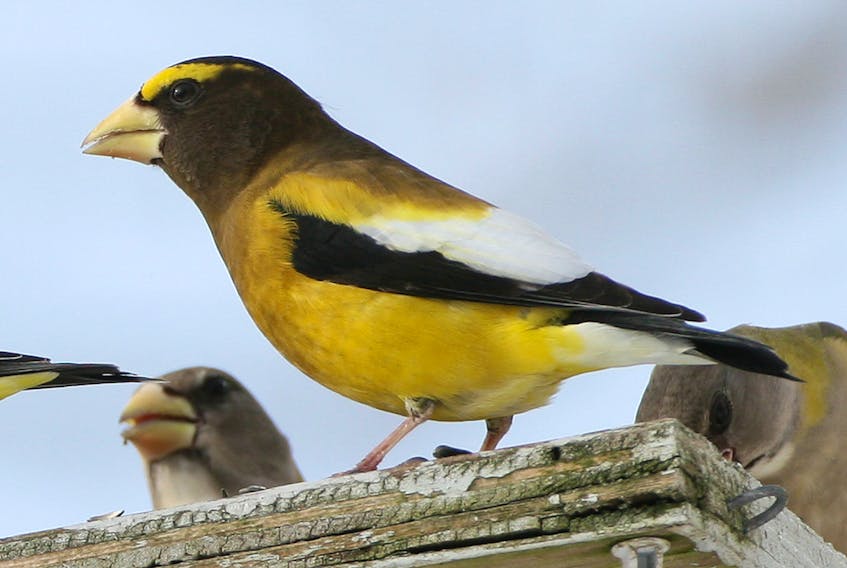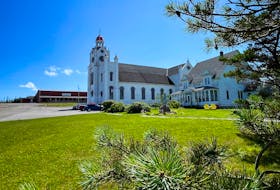There is no denying that the summer has withered away and the winter season is not too far over the horizon.
It is a perfect time to get that bird feeder on the go. Most hard-core bird feeder fans are already well under way.
The juncos are collecting into little flocks and looking for last year’s bird feeders. Busy little black-capped chickadees are enjoying newly erected suet feeders and the fresh supply of sunflower seed.
Blue jays! Need I say more? People have a love-hate relationship with blue jays. They make a mess with the sunflower seeds. They demand peanuts with a loud squawk. Yet blue jays are irresistible with their inquisitive ways.
A few lucky people may also have a red-breasted nuthatch making frequent visits to the feeder for a sunflower seed or suet. Or maybe a downy or hairy woodpecker making themselves familiar on the suet.
Will they all stay for the winter? Too early to tell how many will stay. Evening grosbeaks have a record for making an autumn pass through Newfoundland with only some of them deciding to stay for the winter. Central and western Newfoundland do far better than the Avalon Peninsula with evening grosbeaks.
Northern flickers are for the most part still making a living in the wild poking the ground for ants and grubs but soon they too will be focusing on the bird feeders in their area.
So what is the feeder forecast for the winter looking like? It looks excellent because there is poor crop of wild foods in the woods. Cones are scarce on the fir and spruce trees. There are not many dogberries. The isolated patches of berry-laden trees are not enough to last much beyond Christmas at best. Bird feeders will be a welcome source of food for birds this winter.
Finches are the group of birds to watch. There are seven species of finches that visit bird feeders. There has been an excellent movement of evening grosbeak across eastern North America.
Newfoundland is part of this overall phenomena. Many people in Newfoundland, some who have never seen them before, are seeing evening grosbeaks at their bird feeders. No one complains about the amount of seed a flock of evening grosbeak can mow through in a single day because they are such an attractive species. Sunflower seed is their weakness. They have the large beak made for cracking through sunflower seed like a hot knife through a stick of butter.
Will they all stay for the winter? Too early to tell how many will stay. Evening grosbeaks have a record for making an autumn pass through Newfoundland with only some of them deciding to stay for the winter. Central and western Newfoundland do far better than the Avalon Peninsula with evening grosbeaks.
Pine siskins are pulling off some kind of colossal event throughout north-eastern North America. Birders are pondering their numbers and movements.
Several well-monitored migration stations on the coast of the United States have reported record one-day counts topping 10,000 siskins.
Here on the Avalon Peninsula, they cannot go any farther east so their movements are concentrated along the coast.
Flocks of bouncing siskins balled together move as one tight unit. If the signal comes to land on the alders to feed then they all do it together. When they leave, they all burst into flight in the same instant.
The Newfoundland flocks are but a cog in the wheel of a massive eastern North American movement. Why are the siskins moving like this and where did they come from? And where are they going? And what are they looking for? No one has yet figured out the mind of the pine siskin. Not sure if there will be any still around for the winter.
The friendly feeder finch, the America goldfinch is less dramatic. They hang around near where they nested all year. There are good flocks of them in the wild now. When the colder weather sets in they will come to the bird feeders.
Purple finches, pine grosbeaks and a few red crossbills are visiting select feeders right now. Birders are detecting a movement of common redpolls this fall. So far they have not been showing up at bird feeders but there is still time for this to happen. This should be an entertaining year at the bird feeders.
Rare birds
Rare bird of the week was an immature tundra swan that landed in a school yard in Port-aux-Basques. Word reached the birding community via Mark Lomond. It appeared injured so was captured and released not far away in Grand Codroy River estuary.
There is no better place for waterfowl on the island of Newfoundland than the marshes of the Grand Codroy River estuary. West coast birders Tina Randell, Denise McIssac and Randy White observed the swan the day after its release. It seemed fine and was capable of flying. It should do well there until freeze up and the time to fly farther south.
Keep an eye on your bird feeders for unusual birds such as Baltimore orioles or late warblers.
Bruce Mactavish is an environmental consultant and avid birdwatcher. He can be reached at [email protected].









